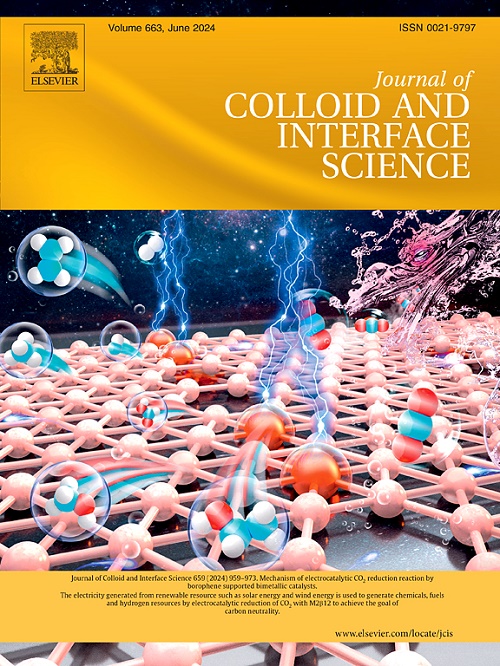Screened Ni3 single-cluster catalyst supported on graphidyne for high-performance electrocatalytic NO reduction to NH3: A computational study
IF 9.7
1区 化学
Q1 CHEMISTRY, PHYSICAL
引用次数: 0
Abstract
Electrocatalytic NO reduction (NORR) to NH3 represents a promising approach for converting hazardous NO waste gases into high-value NH3 products under ambient conditions. However, exploring stable, low-cost, and highly efficient catalysts to enhance the NO-to-NH3 conversion process remains a significant challenge. Herein, through systematic computational studies based on density functional theory (DFT), we rationally designed transition metal triatomic cluster supported on graphdiyne (TM3/GDY) as potential single-cluster catalysts for high-performance NORR. The results indicated that the GDY support is incredibly effective at immobilizing these triatomic metal clusters, preventing metal aggregation and dissolution. Furthermore, the TM3/GDY systems exhibit tunable reactivity for NO activation due to the synergistic effect of triple-metal sites. Among all examined candidates, Ni3/GDY demonstrates the highest NORR catalytic performance with a record low limiting potential of −0.05 V. Notably, NO adsorption strength was identified as an effective descriptor to rationalize the NORR activity trend, which is highly dependent on the amount of the carrying charges on the anchored TM3 clusters. Additionally, the hydrogenation steps during NORR are kinetically feasible on Ni3/GDY with a small kinetic barrier of 0.34 V for the rate-determining step, corresponding to an outstanding turnover frequency (3.03 × 10−25) s−1 per site at 300 K for NH3 generation, implying an ultra-fast reaction rate. Our work not only identified promising NORR catalysts but also provided valuable insights for rationally designing atomically precise novel catalysts for the resource utilization of small molecules.

石墨烯负载Ni3单簇催化剂用于高性能电催化NO还原制NH3的计算研究。
电催化NO还原(NORR)制NH3是一种将有害NO废气转化为高价值NH3产品的有前途的方法。然而,寻找稳定、低成本、高效的催化剂来促进NO-to-NH3的转化过程仍然是一个重大挑战。本文通过基于密度泛函理论(DFT)的系统计算研究,合理设计了石墨炔负载的过渡金属三原子团簇(TM3/GDY)作为高性能NORR的潜在单团簇催化剂。结果表明,GDY载体在固定这些三原子金属团簇,防止金属聚集和溶解方面非常有效。此外,由于三金属位点的协同作用,TM3/GDY体系对NO的活化表现出可调的反应性。在所有候选材料中,Ni3/GDY表现出最高的NORR催化性能,具有创纪录的低极限电位-0.05 V。值得注意的是,NO吸附强度被认为是合理解释NORR活性趋势的有效描述符,NORR活性趋势高度依赖于锚定TM3簇上携带电荷的数量。此外,NORR过程中的加氢步骤在Ni3/GDY上是动力学可行的,速率决定步骤的动力学势垒很小,为0.34 V,对应于300 K下NH3生成的突出的周转率(3.03 × 10-25) s-1 /位点,这意味着超快的反应速率。我们的工作不仅确定了有前途的NORR催化剂,而且为合理设计原子精度高的小分子资源利用新型催化剂提供了有价值的见解。
本文章由计算机程序翻译,如有差异,请以英文原文为准。
求助全文
约1分钟内获得全文
求助全文
来源期刊
CiteScore
16.10
自引率
7.10%
发文量
2568
审稿时长
2 months
期刊介绍:
The Journal of Colloid and Interface Science publishes original research findings on the fundamental principles of colloid and interface science, as well as innovative applications in various fields. The criteria for publication include impact, quality, novelty, and originality.
Emphasis:
The journal emphasizes fundamental scientific innovation within the following categories:
A.Colloidal Materials and Nanomaterials
B.Soft Colloidal and Self-Assembly Systems
C.Adsorption, Catalysis, and Electrochemistry
D.Interfacial Processes, Capillarity, and Wetting
E.Biomaterials and Nanomedicine
F.Energy Conversion and Storage, and Environmental Technologies

 求助内容:
求助内容: 应助结果提醒方式:
应助结果提醒方式:


